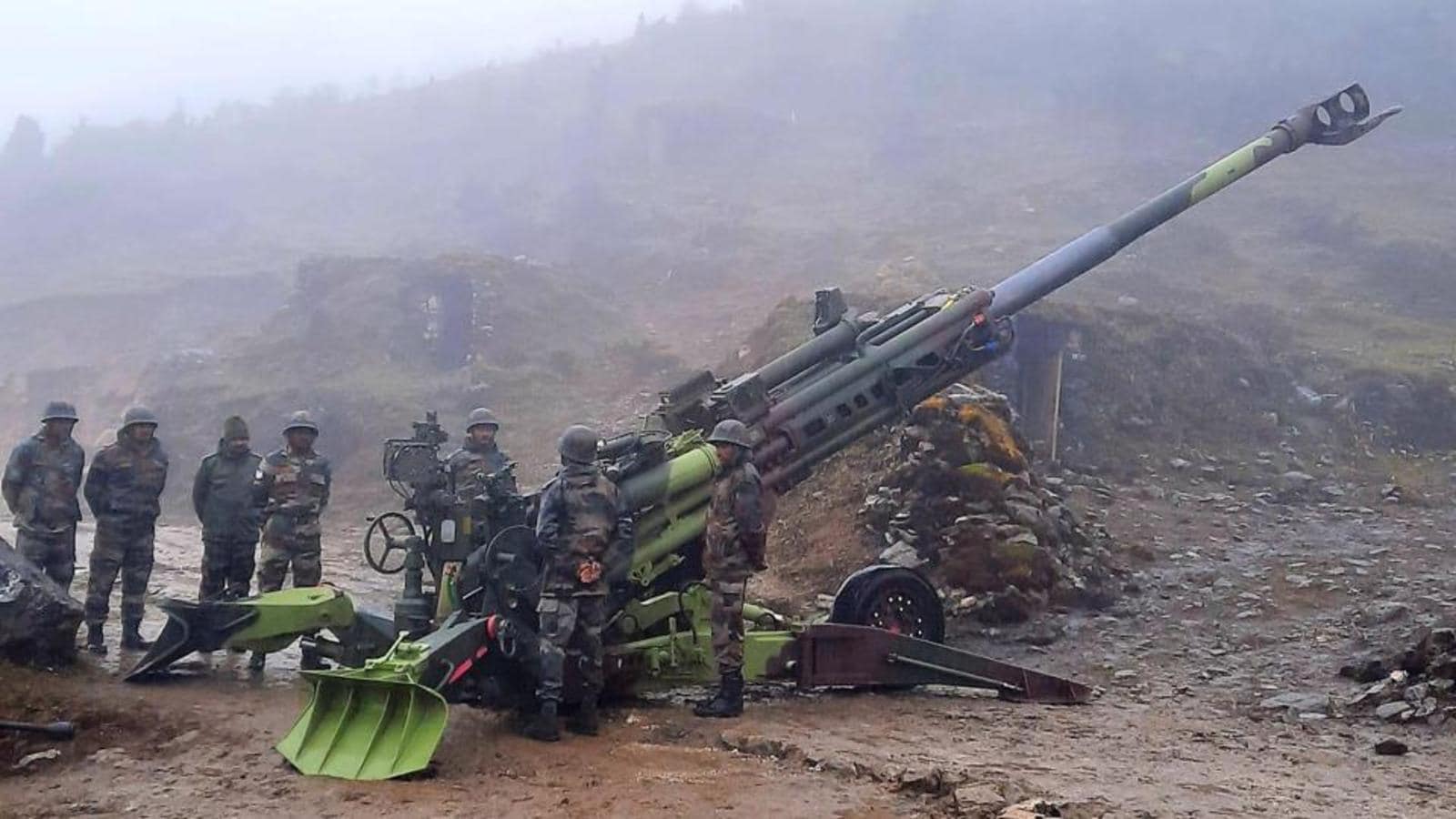Indian Army plans to add 200 more K9-Vajra Artillery Guns
Indian Army is planning to initiate a process under which it plans to buy 200 more Made in India K-9 Thunder Self-Propelled tracked artillery guns. The Army has also planned to buy winter kits that are fine-tuned for winter climatic conditions along LAC in eastern ladakh.
According to news published by the Indian Defense Research Wing, this will be the second batch of orders that will be executed by the L&T as the army also has additional plans for a third batch order of 100 more guns. Indian Army has procured 100 units of South Korean K-9 Thunder Self-Propelled tracked artillery guns in 2017 that were all delivered in 2021, due to which production line of these guns has been lying idle since then.
The winter kits has nine components and systems that will allow it to withstand and operate in the icy winter conditions of the Eastern Ladakh since the original lot purchased earlier in the first batch was to be deployed on the western border in dry humid conditions of the Thar Desert.
On 25 March 2012, South Korean president Lee Myung-bak and the Indian Prime Minister, Manmohan Singh signed MOU to strengthen the economy and military exchanges. On 29 March 2012 at DEFEXPO, Samsung Techwin and Larsen & Toubro announced their partnership to produce the K9 Thunder in India. As per the agreement, Samsung Techwin will transfer key technologies, and the vehicle will be manufactured under license in India using 50 per cent of the domestic content such as FCS and communication system.
Two units of K9 were sent to Thar Desert, Rajasthan for firing and mobility test, and competed against Russian 2S19. Operated by Indian military personnel, the K9 fired 587 Indian ammunitions including Nub round and drove a total distance of 1,000 km. Maintenance test was conducted at Pune, EMI (electromagnetic interference) test at Chennai, and technical environment test was held in Bengaluru until March 2014. K9 Thunder achieved all ROC set by Indian military while the Russian counterpart failed to do so. Hanwha Techwin (previously Samsung Techwin) later told in an interview that the Russian engine performance dropped when the air density is low and in high temperature, the placement of the engine also resulted in the center of the mass located at the rear, making the vehicle difficult to climb high angles. On the other hand, K9 benefitted from automatic control system of the engine, providing the optimum performance based on given condition automatically—this was one of the decisive reason why India selected K9 over 2S19.
In September 2015, the Indian Ministry of Defense selected Hanwha Techwin and Larsen & Toubro as preferred bidder to supply 100 K9 Vajra-T to the Indian Army after K9 outperformed 2S19 Msta-S and passed two-year trial. On 6 July 2016, India agreed in purchasing 100 K9 Vajra-T for $750 million. On 29 March 2017, The Government of India approved budget of $646 million for purchasing 100 K9 Vajra-T. A formal contract of $310 million was signed between Hanwha Techwin and Larsen & Toubro in New Delhi on 21 April. Hanwha Techwin will supply first 10 K9 Vajra-T, and 90 will be license produced in India by Larsen & Toubro.
K9 Vajra-T consist 14 major Indian manufactured systems, 50% of component by value, which include Nub ammunition capable FCS and its storage, communication system, and environment control and NBC protection system. Additional systems were installed such as GPS (Gunner’s Primary Sight) for direct firing capability, and South African APU, which was proven for desert operation—Korean APU was under development phase during Indian trial. The vehicle’s overall design was modified to suitable for operation in desert and high temperature condition, including the change of firing rate to 3 rounds in 30 seconds.
In February 2020, media reported that IIT Madras along with IIT Kanpur, Armament Research and Development Establishment (ARDE) and Research Centre Imarat (RCI) are working on redesigning an existing 155 mm shell using ramjet propulsion that can cover 60 km+ range. It will be compatible with K9 Vajra-T. The shell will use precision guidance kit for trajectory correction. IIT Madras is ensuring that Munitions India can manufacture the shells.
The 100th vehicle was delivered to the Indian Army on 18 February 2021, completing the contract ahead the schedule.
In May 2021, it was reported that India’s Defence Research and Development Organisation is working with Larsen & Toubro on a light tank using the K9 chassis with 105mm or 120mm gun system to counter China’s Type 15 tank. The light tank variant was opted out as the estimated vehicle weight exceeded 30 t, limiting the places to operate.
The Indian Army planned ordering an additional 40 K-9 Vajra-T from Larsen & Toubro as of 2021 after completion of high altitude trials at Ladakh under cold climatic conditions. India is also looking to export the K9 Vajra-T variant to third countries in collaboration with South Korea and industry partners.
After satisfactory performance at high altitude terrain, Ministry of Defence (MoD) is getting ready to place repeat order of 200 K9 Vajra-T worth ₹9,600 crore. The proposal for first 100 units was cleared on 27 September 2022. The new batch will equip enhanced engine suited for high altitude operation, and is expected to complete delivery by 2028.
This domain may be for sale!
www.defenceview.in


